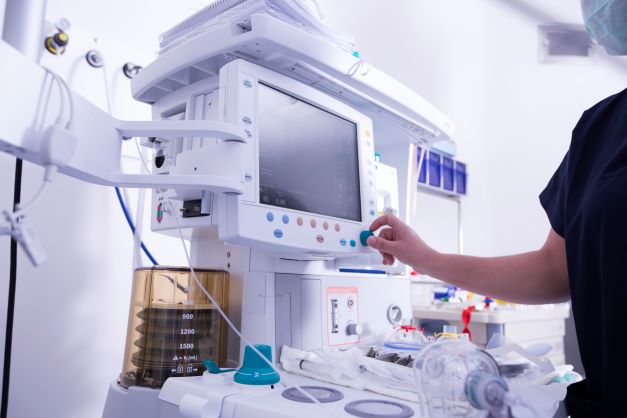XVIVO's Heart Tech: Navigating global regulatory approvals for lifesaving medical device
With medical devices that save lives, proving safety and reliability is critical. On their road to launching an innovative heart technology, XVIVO must secure approvals from global regulatory bodies.
New heart technology widens geographical span of available donor hearts
XVIVO is the only medical technology company dedicated to extending the life of all major organs so transplant teams around the world can save more lives.

The XVIVO Heart Assist Transport™ is designed to maintain a donated heart's condition outside the body during transport from the donor to the recipient, which widens the geographical span of available hearts.
"There are many years of research behind the product. The heart technology consists of both the device and a tailormade perfusion solution. The transport box has a cooling system to maintain the temperature, a gas system to supply the heart with oxygen and a pump to perfuse the heart," XVIVO Medical design Engineer Martin Ross explains.
Need: Safety testing and documentation of the XVIVO Heart Assist Transport™ abilities
"A product of this kind requires a lot of tests involving many standards. As an independent test house, we cannot actually fix problems or correct design challenges that arise ourselves. But we can help interpret the standards or find practical approaches to efficient testing.
We can provide checklists for customers like XVIVO to confirm that all of the required documentation is present at the time of testing. Our role as a test partner is not just about ticking regulatory boxes; it's about ensuring that the product is truly fit and safe for its lifesaving purpose while operating in the intended environment.
In this case, our job was to help find out how the XVIVO Heart Assist Transport™ could qualify as a medical device – figuring out which standards apply, narrowing down a timely test scope and being a one-stop partner for XVIVO's every test and standard need on a very tight schedule," FORCE Technology Product Compliance Team Leader Morten Kjær Johansen says.
Advantage combining standard expertise and safety testing in external, unbiased lab
The extensive testing processes were designed to simulate real-world conditions, pushing the device to its limits. This approach ensures it can withstand the rigorous conditions of the emergency medical services environment without faltering.
The tests provide the evidence needed to demonstrate that the XVIVO Heart Assist Transport™ complies with stringent safety, EMC and reliability standards, and each is a building block in constructing a set of reports counting hundreds of pages. The document is pivotal in securing regulatory approvals needed for market access.
About the testing programme
XVIVO Heart Assist Transport™ testing included electrical, mechanical, and environmental safety testing, testing for electromagnetic compatibility (EMC), acoustical testing for alarm systems, and evaluation of documentation for software, usability and risk management requirements.
The test programme shows compliance with the following industry standards:
IEC 60601-1:2005/AMD1:2012/AMD2:2020
IEC 60601-1-2:2014/AMD1:2020
IEC 60601-1-6:2010/AMD1:2013/AMD2:2020 and IEC 62366-1:2015/AMD1:2020
IEC 60601-1-8:2006/AMD1:2012/AMD2:2020
IEC 60601-1-12:2014/AMD1:2020
IEC 60529:1989/AMD1:1999/AMD2:2013 (IP code)
"Thanks to all the testing we have done and our shared determination and solid partnership, we have now collected and summarised all necessary documentation.
XVIVO's mission is to push the research forward; heart technology is only one example. Our partnership with FORCE Technology on testing the product from every angle is an instrument in achieving an innovative and safe product," Martin says.
Learn more: Results from an Australian/New Zealand study using XVIVO's heart technology published



